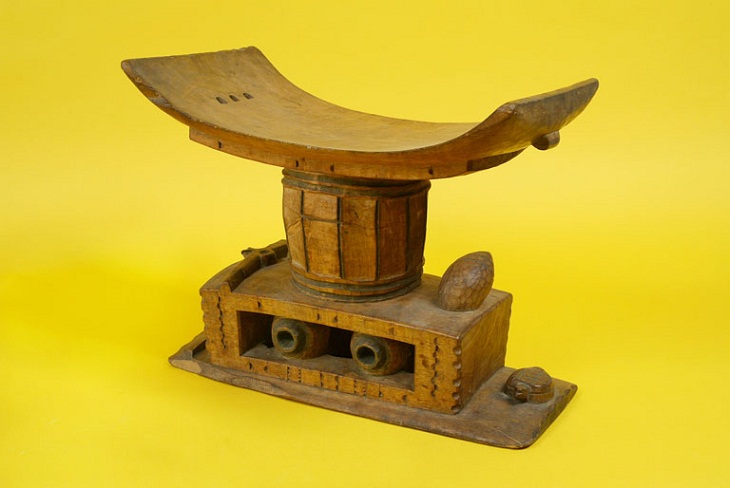In 1828, an anarchic mob razed a pastry shop owned by a French chef, Remontel, in Mexico City. Despite his appeal for damages, the Mexican government chose to overlook his request. Subsequently, he appealed to the French government for assistance, but the request was seemingly forgotten by everyone else, except Remontel.
Ten years later, the incident drew the attention of King Louis-Philippe, who asked the Mexicans to compensate Remontel, demanding an astounding 90% interest rate. When they declined, the French imposed a blockade on Mexico and occupied the city of Veracruz.
Sadly, almost no one cared about the pastry or the shop, except perhaps Remontel, as the primary motivation behind the conflict was financial gain. Mexican Gen. Antonio Lopez de Santa Anna returned from retirement to combat the French, but his efforts proved insufficient. The French forces remained in Mexico until the country consented to pay their demands. However, after the French withdrew, Mexico didn't honor its financial obligations, resulting in another French invasion in 1861. In the end, the event was forgotten entirely when the French Empire crumbled.
2. The Pig War
This is a conflict that could have escalated into something much larger, which makes it even more bizarre. The Pig War was a boundary dispute between the United States and Great Britain that occurred in 1859 on San Juan Island, located between Vancouver Island and the mainland of North America. The dispute arose when an American farmer, Lyman Cutlar, shot a British-owned pig that had been rooting in his garden. The British authorities demanded compensation for the pig, but Cutlar refused, and tensions escalated. Both sides began to send troops to the island, and for several months, the situation remained tense, with each side building up its military presence.
However, due to the efforts of a British commander and an American officer, Captain George Pickett, the conflict was peacefully resolved, and both sides agreed to a joint military occupation of the island until a final settlement could be reached in in October 1859. The Pig War is considered a prime example of peaceful conflict resolution, as it avoided escalation into a full-blown war between two major world powers.
3. The Kettle War
For more than a century, the northern Netherlands thrived as a sovereign republic, while the southern Netherlands was under the dominion of the Holy Roman Empire. However, in a peculiar turn of events in 1784, the emperor unexpectedly demanded access to ports in the south through the River Scheldt, which had been blocked by the north for an entire century.
Instead of making a polite request, the Holy Roman Emperor dispatched a fleet of ships led by the state-of-the-art vessel, Le Louis, to the river's mouth. The formidable armada encountered a lone Dutch ship, the Dolfijn, which fired a single shot directly at Le Louis, striking a soup kettle and leading to the immediate surrender of the flagship.
Thanks to timely intervention, the Netherlands, particularly its northern territories, were spared from danger.
However, the emperor expressed understandable distress due to the loss of his valuable ship. This incident caught the attention of other European nations, leading the Holy Roman Empire to abandon its ambitions for the southern Netherlands, fortunately without any casualties.
4. The Great Emu War of Australia
The Emu War in Australia occurred in 1932 when large numbers of emus, seeking food and water during a drought, invaded farmlands in Western Australia. Frustrated by crop damage, the farmers requested military assistance. The government dispatched soldiers armed with machine guns to combat the emu infestation.
However, the war proved challenging. The emus were swift and elusive, making them difficult targets. As a result, the soldiers struggled to achieve a significant impact, leading to public ridicule and labeling the operation as a "war" against birds.
After a few weeks, the military withdrew, and the emu problem persisted. Despite the government's efforts, the Emu War demonstrated the resilience and adaptability of wildlife in the face of human intervention. Eventually, non-lethal measures were implemented to address the emu issue.
5. The War of the Stray Dog
The year 1925 saw a short-lived battle unfold between Bulgaria and the Second Hellenic Republic, triggered by an episode at the Belasitsa border. The incident began when a Greek soldier's dog accidentally crossed over into Bulgarian territory. When the soldier attempted to recover his pet, Bulgarian guards shot him, leading to the minor clash. It's important to mention that other accounts offer a less sensational account of events, excluding any mention of the dog.
The Greeks used the shooting incident as a call to action, leading them to invade Bulgaria and take control of multiple villages. Their plan to shell the city of Petrich was halted when the League of Nations stepped in and denounced the attack. Eventually, an international committee negotiated a truce between the two countries, but tragically, around 50 lives were lost due to the initial misunderstanding.
6. The War of Jenkins' Ear
Back in 1731, Spanish authorities detained Robert Jenkins, a British trader, on charges of smuggling and seized all his cargo. Adding insult to injury, they needlessly mutilated him by cutting off his ear. Eight years later, seeking a pretext to expel Spain from the Caribbean and South America, the British waged a war that resulted in 25,000 casualties and nearly 5,000 ships lost, all in retaliation for that act against Jenkins.
Disease, rather than war, took a more significant toll, resulting in a high number of casualties. Tropical diseases caused the British to suffer defeats in nearly all their offensives, while Spain also struggled in their counterattacks. Moreover, the War of Austrian Succession saw the English, Spanish, and French vying for control over Austria, overshadowing the original cause of Jenkins' ear.
7. The Football War
While football can ignite passion among fans, it's hard to imagine it becoming a cause of war, isn't it? But that's exactly what happened in 1969. Admittedly, the initial triggers for the brief conflict between El Salvador and Honduras in 1969 were related to land reform and immigration concerns. However, the situation escalated dramatically when the two nations clashed in a 1970 World Cup qualifier on June 8 and June 15. These games were marred by violent altercations between rival fans, resulting in the dissolution of diplomatic ties and eventually leading to a five-day war the following month, which claimed about 3,000 lives.
8. War of the Golden Stool
Once a coveted region within modern-day Ghana, the Ashanti Kingdom caught the attention of the British Empire. In 1896, King Prempeh's refusal to accept British Protectorate status resulted in the British forcibly imposing their protection upon the kingdom. Undeterred by the invaders, the Ashanti people displayed unwavering determination, engaging in fierce resistance against the British.
The Ashanti Kingdom regarded the Golden Stool as a powerful symbol. The stool was believed to contain all the souls of the Ashanti people and served as a symbol of their unity. Crafted from solid gold, this sacred artifact measured 18 inches in height and 24 inches in length, and its cultural importance was immense. However, in 1900, Sir Frederick Hodgson, the British Governor of the Gold Coast, insisted on sitting on it.
A strong sense of fury engulfed the Ashanti people at this act, sparking a fierce war that spanned six months and resulted in the loss of 2,000 Ashanti lives and 1,000 British soldiers. Yaa Asantewaa, the Queen Mother and Guardian of the Golden Stool, was eventually captured, but the stool eluded the British forces and remained hidden from them for numerous years before being returned to its sacred place of honor.








